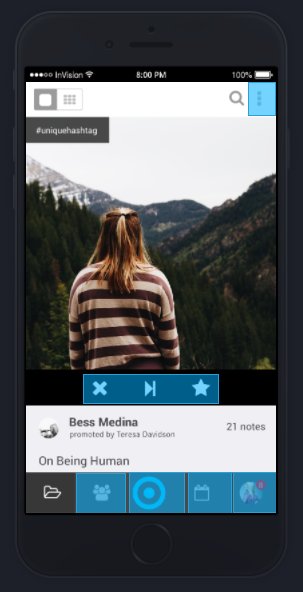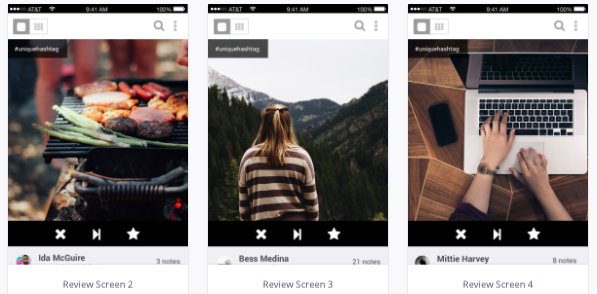Mobile applications are a big undertaking, especially for companies that are new to the world of app development. Large price tags and high levels of uncertainty – a bad combination for any business venture. For inexperienced companies, mobile app development can often become bloated, with the final cost greatly exceeding the original budget, to the dismay of developers and business owners alike. Attempting to cut corners, on the other hand, can result in critical mistakes like crashes, confusing user interfaces, or inadequate security – issues that subsequently cause high user abandonment rates.
Fortunately, these concerns can all be addressed by creating a prototype before building the actual mobile app.
What is a Mobile App Prototype?
A mobile app prototype is an interactive demo that portrays the design, functionality, and user flow of an app. Also referred to as interactive prototypes or clickable wireframes/mockups, the prototype is created entirely in design and lacks the actual programming necessary for a fully functional application. This prototype can be tested rigorously and shown to internal teams to create a sophisticated and shared vision of what the final product should be. The prototype is a precursor to the app development process and can be completed as a separate, smaller contract, with the development phase contingent on customer satisfaction with the results of the prototype phase.
Creating a mobile app prototype before you commit to building the app comes with a number of benefits.
Benefits of Mobile App Prototyping
1. Better Clarity.
Clarity surrounding what you are going to be ultimately build might be the most important thing to have before starting app development. If there is uncertainty around any aspect of the app, the end result can be surprising to stakeholders (which is almost never a good thing). Shared understanding of intended functionality, user flow, and even look and feel is notoriously hard to achieve without a visual aid – which is why an app prototype can be so valuable. By building out interactions, interface, and visuals in the prototype, all stakeholders can view and interact with the app before spending the money to develop it – ensuring that the overall purpose of the app is exactly as intended.

2. Better Collaboration.
Prototypes allow teams to collaborate and iterate quickly and efficiently. Change rounds can be turned around much more quickly, as all work is being done in design rather than in development. Iterations of the prototype can be rolled out multiple times per week, meaning clients can feel free (and are even encouraged) to request several rounds of changes until the app is perfect. Continuous conversations between UX designers, product owners, and developers ensure that the solution proposed in the prototype will work for all parties when the project reaches the development phase.
3. Simpler Acceptance.
For enterprise organizations, one of the most difficult aspects of getting a mobile app built is achieving stakeholder alignment. Often there are several parties with decision-making influence – some very technology-forward, others who question the need for expensive digital technology. One thing is certain – it is much easier to convince a room full of people to spend $100,000 on an app when you can show them exactly what it will look like and how it will function, rather than reading through a set of functional specifications and assuring them it will be great. Especially when there might be several stages of internal stakeholders to present to, having a visual aid can be invaluable to demonstrating value.
4. No Surprises.
Once stakeholders have accepted the project and the app has been built, the worst thing possible is for them to be surprised by the finished product. A finished prototype is also used as a reference for developers, leaving as little as possible up to assumption and interpretation and resulting in an app that very closely, if not exactly, matches what was sold to the internal team. If a picture is worth a thousand words, the design process that produces an interactive prototype is worth at least a few dozen pages of a functional specifications document.
5. More Predictability.
After the team has agreed on a common vision for the app, as demonstrated in the prototype, development becomes much more predictable. First, the development team will be able to make much more accurate estimates. Comprehensive understanding of what is being built is much easier to achieve when developers can click through an interactive prototype in conjunction with reading the functional specifications document. These higher-certainty estimates dictate the project schedule and budget – which, in turn, will also be more certain that without the prototype.

6. Cheaper.
Creating a prototype before building the mobile or web application itself is not always cheaper. When you’ve got a team of developers who are equally talented and expensive, any inefficiencies can end up being costly. This is why it’s so important to be clear about what you’re building and why before you start – there are almost always multiple rounds of feedback and iteration before the perfect solution is agreed upon. This design process is simple and affordable to go through during prototyping – in fact, it is highly encouraged. But if an app is developed and it is found that it doesn’t meet the originally intended requirements and needs to be rebuilt, it can be wildly expensive. Even if the prototype has to go through several rounds of feedback, the end result will be much cheaper than if you have to go through even a single unexpected change round in development. By including the prototype phase, the unknowns and risk are front-loaded – mistakes can be made, extra change rounds can be added, the project can be completely reset – and the project can still result in a successful app that comes in on-time and on-budget.
Conclusion
There are, of course, some scenarios in which a prototype is not necessary before beginning development. For example, stakeholder alignment may already be comprehensive, or the requirements are completely known and well-documented. If your company is so lucky, a prototype might not add value proportional to its extra price tag.
For the majority, though, creating an interactive prototype of an app comes with upfront cost that is relatively small when compared with its benefits: increased clarity, easier acceptance, better collaboration, less surprises, more predictability, and (often) a cheaper final spend and better final product. For companies that are on the fence about building a mobile app, or intimidated by the process and potential risk, or unsure of exactly how to solve specific business problems, designing a prototype is one of the best ways to set your company up for a successful mobile app.
Resources
- Explore 5 Things That Can Make or Break Your Mobile App
- Start a conversation with us to see if an interactive prototype is right for you


